What to do if the leaves of an orchid turn yellow?
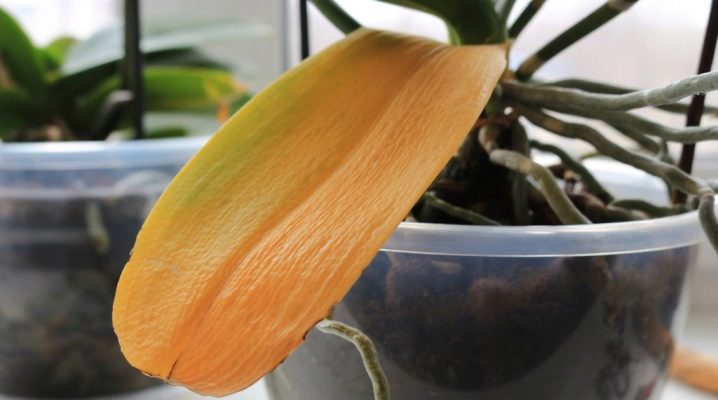
The yellowing of the leaves in an orchid is a situation faced by both beginners and experienced flower growers. Both natural causes and non-compliance with the rules of care can contribute to the appearance of this problem. Why can the leaves of exotic beauties turn yellow? How can you fix this problem?
Causes
Each leaf of a plant has an individual life cycle, at the final stages of which the leaf changes color, turns yellow, and then dries up and dies off. This process is considered natural and normal. Usually age yellowing leaves affects the lower tiers of the plant. However, how this process will take place largely depends on the type of orchid. There are also known hybrids that completely fly around immediately after the end of flowering.

Age-related yellowing of the leaves, usually starting at the base, should not be a cause for concern. But if the plant begins to intensively lose foliage, the current care regimen should be revised and appropriate adjustments should be made to it. Among the main reasons due to which the leaves of orchids begin to wither and fall off en masse, flower growers distinguish the following:
- violation of the irrigation regime;
- inappropriate place;
- violation of the feeding regime;
- unsuitable air humidity;
- insufficient illumination;
- defeat by pathogens;
- pest activity.
Non-compliance with the watering regime
Violation of the watering regime is one of the common causes of yellowing and falling leaves. If the orchid visually looks healthy, but its leaves for some reason lose turgor and turn yellow, it is possible that the problem is caused improper watering... The tropical origin of this exotic determines its increased requirements for moisture in the substrate. Therefore, to keep your orchids in good condition, it is very important to water them on time. In summer, 2-3 waterings per week are enough, in winter - 1-2 waterings.
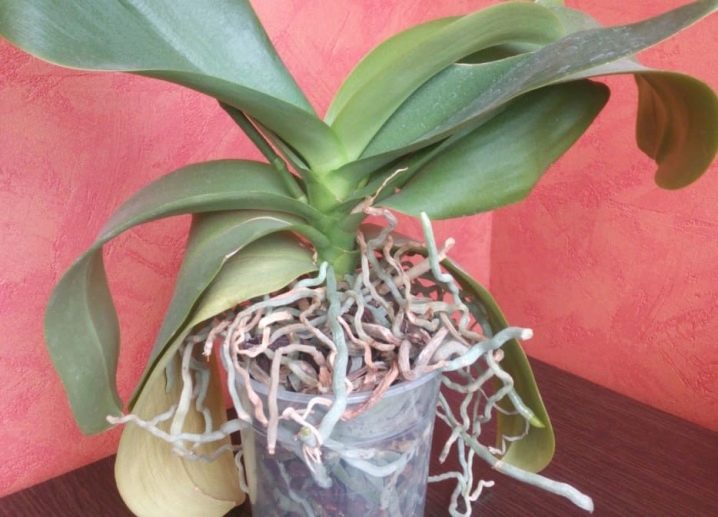
Excess moisture is also a danger to these sensitive sissies. Overuse of watering leads to waterlogging of the substrate, due to which the roots of plants begin to rot, and the leaves become yellow-brown in color.
It is important to note that exotics can turn yellow as a result of watering with hard water. The increased salt content in the water is perceived by orchids very painfully, which over time can lead to a change in the color of the foliage and a deterioration in the condition of the plant. Experienced flower growers recommend using soft water for irrigation - rain, filtered or distilled... The fact that hard water is the cause of the yellowing of the leaves is evidenced by a specific gray-yellow bloom on the surface of the substrate.


Inappropriate pot location
Sometimes novice growers complain that the orchid's leaves have turned yellow and partially or completely fallen off. This often happens when moving the pot to the wrong place. These exotics very painfully endure movements in space, which can cause yellowness and wilting of leaves. It is especially dangerous to rearrange and transplant a flowering plant, since in this case there may be a risk that the orchid will drop blossoming buds. After transplanting, it is recommended that plants be provided with gentle living conditions.
It should be a place with diffused light, stable temperature and humidity.

Violation of the feeding regime
Lack or, conversely, excess of nutrients in the substrate is another common cause that can cause yellowing and foliage in exotic plants. Orchids usually begin to turn yellow with a deficiency of potassium and iron, as well as with an excess of minerals in the substrate. To avoid possible problems associated with a lack or oversaturation of nutrients, top dressing should only be done using fertilizers in accordance with the recommended schedule.
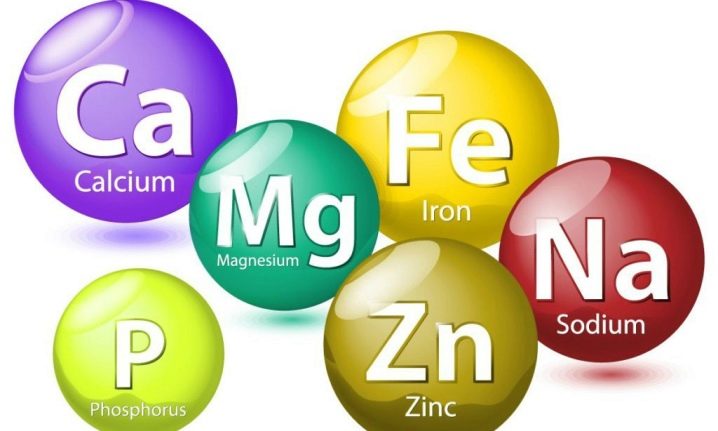
Unsuitable humidity
The tropical origin of orchids determines their increased requirements for stable air humidity. In order for the plants to fully develop, it is advisable to maintain the air humidity in the room at a level of 30-40%. With a lack of moisture in the air exotics begin to wither, dry and turn yellow. With a very dry air, orchids may turn yellow and even fall off all the leaves.
Excessively humid air is also unsuitable. for these capricious plants. If the room is constantly high humidity, this can lead to rotting of the aerial parts of the orchid. In addition, high moisture content can cause fungal infections in orchids.

Insufficient illumination
Orchids are very sensitive to lack of light. They need light for the normal process of photosynthesis. In insufficient light, the plants take on a sickly appearance, and their foliage changes color to a pale yellow color. It should be noted that direct sunlight is no less detrimental to orchids than lack of light.
Under the influence of direct sunlight, burns in the form of yellow spots begin to form on the delicate leaves of exotic plants. To prevent this from happening, on a bright sunny day window glass, next to which there are orchids, should be shaded with a special protective film or newspaper.
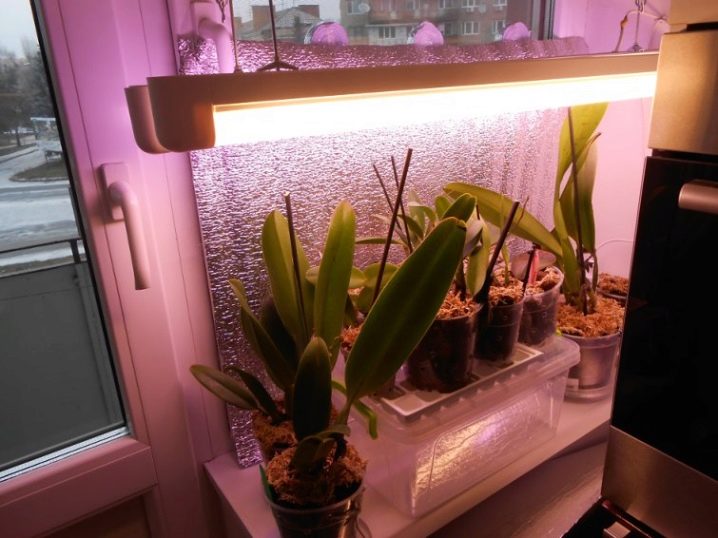
Damage by pathogens
Another reason due to which leaves begin to turn yellow on plants is damage by viruses, bacteria or fungi. The main disposing factor in this case is a decrease in the immunity of exotics, caused most often by non-observance of the rules of care. As a result of a decrease in protective functions in orchids, diseases begin to develop, which may be directly or indirectly indicated by:
- discoloration, wilting and dropping of leaves;
- discoloration of the roots;
- the appearance of spots on the aerial part of the plant (leaves, arrows).
In a blooming orchid, which has already shot an arrow of a peduncle, as a result of diseases, the flowering process stops, and the formed buds wither and fall off. Most often, yellowing of leaves in exotic plants is caused by fungi, which can be eliminated with the help of careful treatment with fungicidal preparations.

Pest activity
Often, pests cause yellowness and wilting of leaves in orchids. The most common types of parasites whose activity can lead to the appearance of these symptoms are:
- aphid;
- spider mite;
- worm;
- shield.
Most pests feed on plant juices, which inevitably leads to its death. Other parasites (root bug) damage the roots. In both cases, the aboveground part of the exotic begins to turn yellow, dries up and dies. In addition, some types of pests (aphid, mealybug) produce a special sweet secret - sticky pad, which is an ideal breeding ground for pathogenic fungi. In this case, the plant infected with parasites also begins to suffer from a fungal infection, which very quickly spreads not only to the leaves, but also to the roots, peduncle arrows, stems and buds.
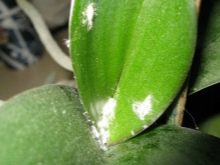
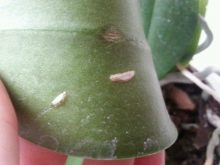

What to do?
Treatment of the affected orchid, in which the leaves began to turn yellow and fall off, must be carried out in accordance with the cause of the problem.If the source of the yellowing of the foliage is improper care, urgent adjustments are required. It is important to bear in mind that in most cases, a fallen flower can be saved if the treatment is prompt and competent.
An orchid affected by improper care must be provided with sparing conditions of existence. For a while, it can be moved to a place with diffused and dim light, stable temperature and humidity. If the cause of the yellowing of the leaves of the flower was irrigation irregularities, and the orchid itself began to rot, it is necessary to temporarily reduce the frequency of watering or completely suspend them. It is also necessary to ensure that the indoor air is slightly drier than usual.
That orchids suffer from moisture deficiency, evidenced by their yellowing at the edges. In this case, measures are needed to replenish the plant's need for moisture. So that a drying and yellowed exotic can independently recover from a lack of moisture, it can be temporarily placed in makeshift greenhouse from a large plastic bottle. During the recovery period, it is necessary to maintain warmth and high humidity in the air and substrate in the greenhouse.
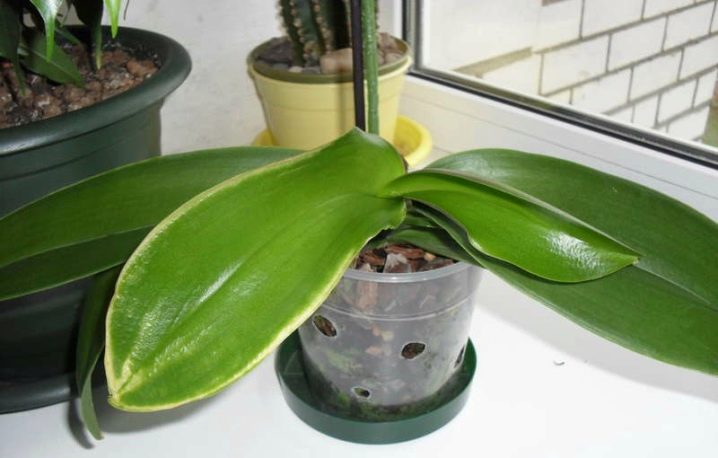
Noticing that the orchid dies from improper care, diseases or pests, you should isolate it from other plants for the duration of treatment. Dead (dry or rotten) leaves, peduncles and buds must be carefully removed with sharp scissors, sprinkling the cut with crushed activated carbon. Next, the plant must be moved to a room with gentle conditions of detention. The substrate in the pot with the affected exotic must be replaced with a new one without fail.
If the plant has become a victim of pests or pathogens, it is necessary to accurately diagnose the cause of the problem. Fungal diseases of orchids require careful complex treatment with the obligatory use of fungicides. These include drugs "Fitosporin", "Quadris", as well as Bordeaux mixture.
Parts affected by fungus or rot must be removed, otherwise it will not be possible to get rid of the disease.
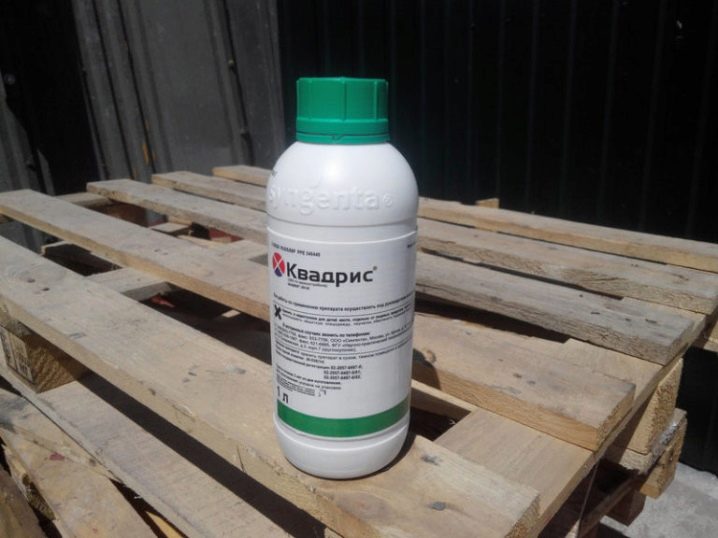
The fact that an exotic beauty dies due to an invasion of pests is evidenced not only by yellow spots on the leaves, but also traces of the parasites themselves... Most pests can be detected by carefully examining the plant with a magnifying glass. So, aphid colonies on an orchid are usually found on the undersides of the leaves in the form of white-gray or white-green clusters. You can fight aphids and using chemicals (insecticides), and using home methods.
The most effective insecticides against aphids are Fitoverm, Aktara, and Confidor. From folk recipes, a saturated soap solution, with which the plant is washed, has proven to be very effective. The solution is prepared based on the proportions: 1 tablespoon of grated laundry soap per 1 liter of settled water.
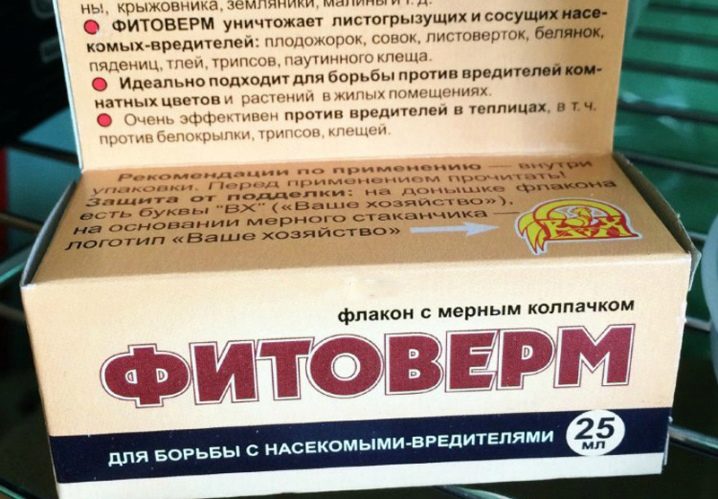
Concentrated laundry soap solution used to kill spider mites. Just like aphids, this parasite prefers to inhabit the inner surface of leaves, which begin to turn yellow and dry. In addition, specific tiny dots on the leaves of the orchid, indicating the places where the parasite ate the juices of the plant, also indicate the defeat of the tick. Washing with soapy water and the use of insecticides Fitoverm, Neoron and Aktellik allow you to get rid of the tick.
If the leaves on the orchid turn yellow and disappear under the invasion of mealybugs, you can try to eliminate the parasites using the drug "Actellik", as well as the universal insecticide "Fitoverm". You can detect pests when examining the root zone of the plant, looking closely at its base.
Another dangerous pest of orchids - shields and false shields. Just like the previous parasites, they feed on the juices of tropical beauties, injecting a toxic substance into the site of the bite.A characteristic sign of damage to orchids by scabbards and false scutes is the appearance on the leaves of strange convex growths and spots of brown, gray-yellow or white... Means such as "Permethrin", "Aktara", "Actellik" and "Phosphamide" proved to be very effective in the fight against these pests.
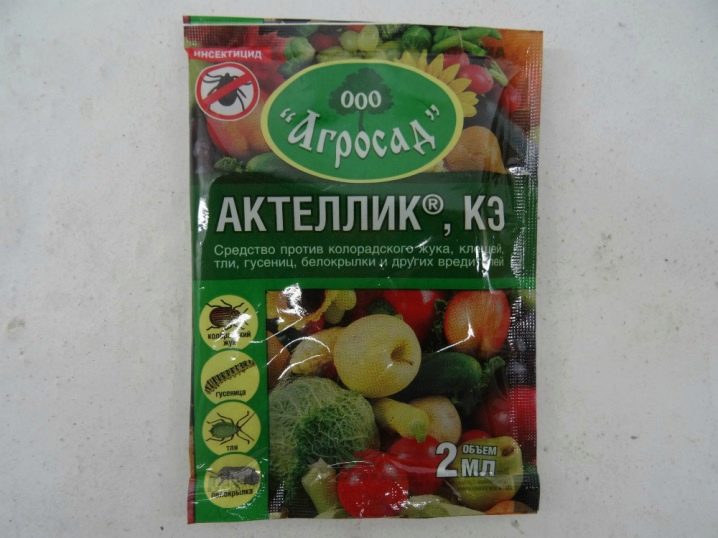
Home care
Orchids very quickly signal to their owner that something serious is happening to them. Yellowing of leaves is one of the most common and rather alarming signals. The first thing a grower should provide to his exotic pets is proper care, on which the immunity of plants depends. Full care involves the creation of the following conditions:
- compliance with the regime of watering and feeding;
- control over the level of air humidity (30-40%) and substrate;
- optimal temperature regime in the region of + 20 ° C without sudden changes;
- using only high-quality substrate;
- compliance with the rules for plant transplantation;
- lack of drafts and cold air flows in the room;
- high-quality ventilation;
- soft diffused lighting;
- the duration of daylight hours is not less than 12 hours.

A gross violation of any of the presented rules of complex care can deplete the strength and immunity of the plant, making it vulnerable to pathogens and pests. Even if the orchid remains healthy, its appearance will change for the worse if care is disrupted, since this exotic painfully perceives any unsuitable living conditions.
Neglect of the rules of care, rough and careless transplantation, as well as an amateurish approach to growing orchids are the main factors leading to a decrease in immunity, disease and even death of plants.
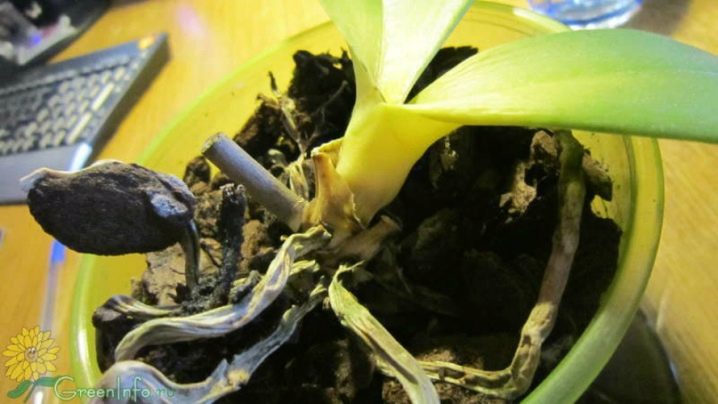
In diseased flowers, it is important to carefully and carefully trim all affected parts. This procedure is performed with sharp scissors or a scalpel, trying to cut the desired fragment with one confident touch. Places of cuts must be treated with charcoal powder or ground cinnamon.
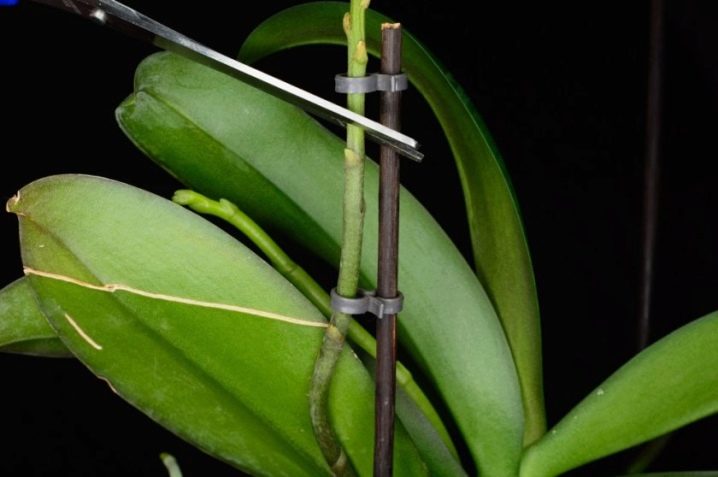
Advice
When buying a new orchid, you need to temporarily place it in quarantine... During the quarantine period, there should be no signs of disease development or pest infestation on the flower. It is also important to monitor the quality of the purchased substrate. When buying, you should pay attention not only to its structure, but also to its composition. Before use, the substrate needs process with a solution of potassium permanganate or disinfect with very hot water.
What to do if the leaves of an orchid turn yellow, see the video below.































The comment was sent successfully.